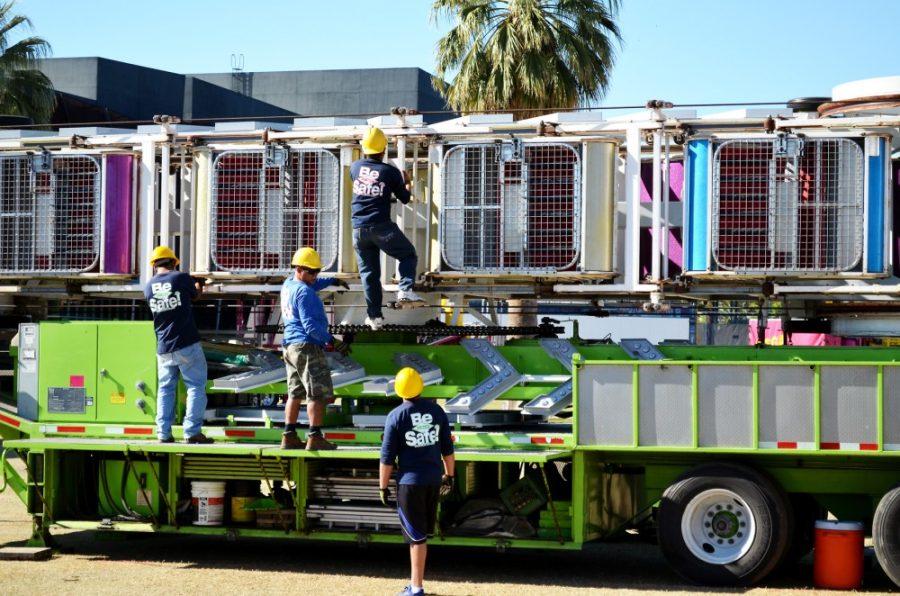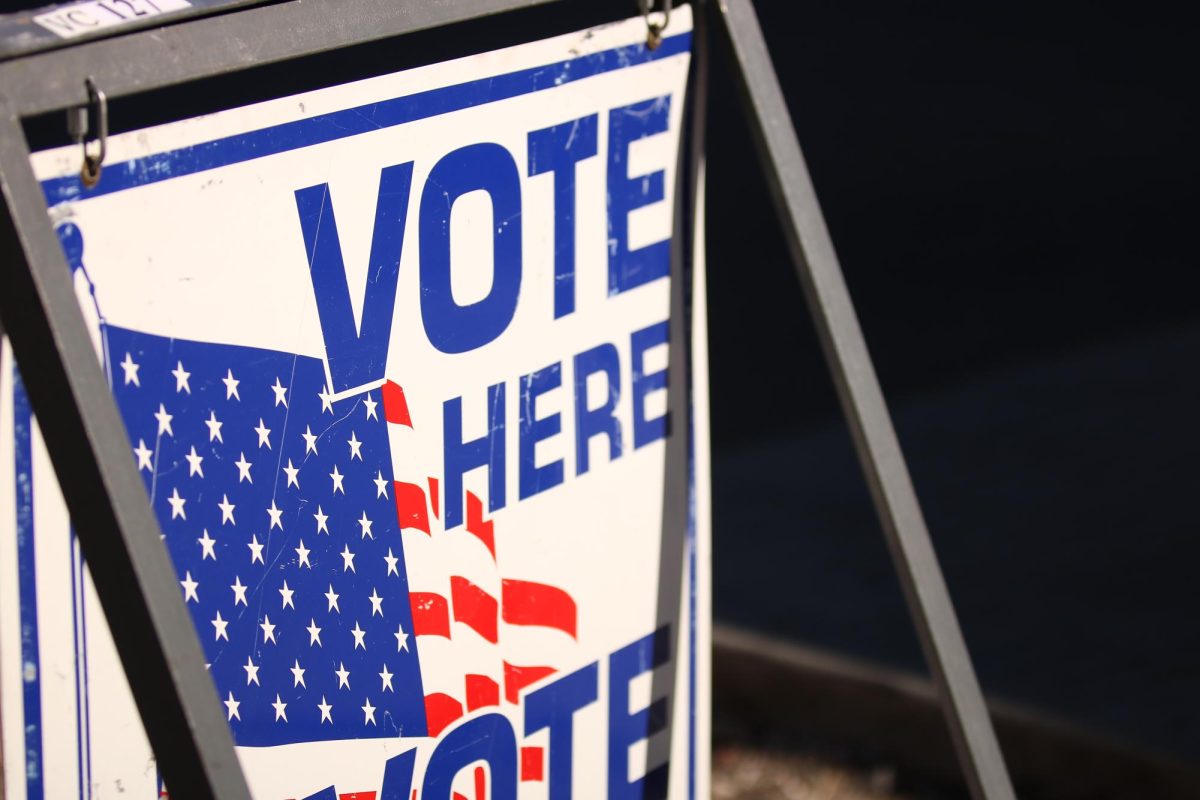Spring Fling is returning to campus for its 40th anniversary this weekend, after 15 years.
Setup for Spring Fling, which organizers say is one of the largest student-run carnivals in the country, began Monday. Crews have begun fencing off the UA Mall from Cherry Avenue to Campbell Avenue, where all the rides will be erected; at least five of the rides had already arrived on the mall Monday. A total of 30 to 35 rides are expected, including the Mach 1, the Techno Jump, Mega Drop and the Zipper.
Morgan Abraham, president of the Associated Students of the University of Arizona, said the whole purpose of the annual carnival is to raise money for clubs. On average, about 50 clubs participate, setting up booths to run an activity or sell food for tickets, which are the currency used at Spring Fling.
“At the end of the event, the tickets equal X amount of dollars,” Abraham said. “So, [clubs] are able to make money and we’re able to put on an amazing event for students; it’s a win-win for everyone.”
In its 25 first years, Spring Fling was held on campus. It only moved to Rillito Downs when construction began for the Manuel Pacheco Integrated Learning Center and the event could no longer be held on the Mall. The carnival had been expected to move back to campus after construction was over, Abraham said, but ended up staying at Rillito Downs — until this year.
Jared Young, an accounting and finance senior and the executive director of Spring Fling, said bringing the carnival back to campus is like bringing it home.
“I am really excited just to see Spring Fling back where it started and see something that’s been missing from campus for 15 years,” Young said. “There’s just been something missing. … The atmosphere was not the same.”
Efforts to bring Spring Fling back to campus have been ongoing for several years, Abraham said, after hearing students express negative views on having the carnival off campus.
“We thought this was a really good opportunity to bring it [Spring Fling] back and re-engage students who hadn’t been able to experience it in the past,” Abraham said.
But some have expressed disapproval over the carnival’s reintroduction to campus. Residents of nearby housing associations such as the Sam Hughes area raised concerns about the noise level of Spring Fling.
“The neighbors are just concerned about noise, disruption and disregard,” Young said. “We’ve really incorporated them into the planning to make sure that they’re ok with how we’re doing things.”
Young said he and his team have worked on the layout of Spring Fling, finding ways to position rides and the concert stage to minimize noise. The team has also eliminated Thursday, usually the first day of Spring Fling, from the carnival’s schedule out of respect for the nearby residents.
“It is a disruption, but we’re hoping that the bigger message of what we’re doing for the community and what we’re doing for the clubs ultimately shines brighter than the disruption,” Young said.
Many students have said they are glad the carnival is back on campus. Jenn Kennard, a psychology sophomore, said she didn’t go to Spring Fling last year because it was off campus.
“No one really talked about it last year, and all my friends didn’t go to it,” Kennard said. “This year it’s going to be on campus, so I think they’re going to get a better turnout. I’m going to go.”
Elizabeth Bercel, an ecology and evolutionary biology senior, said she went to Spring Fling her freshman and sophomore years, but stopped going after the second year because she didn’t think it was worth the money. After finding out that it was on campus this year and admission is free with a CatCard, Bercel said that she might think about attending.
Abraham said he hopes the event will garner the biggest turnout it’s had in a long time.
“I think the big thing is how we are engaging the students, and how clubs are doing as far as fundraising,” Abraham said. “I’m very confident that there will be more students than ever this year.”









